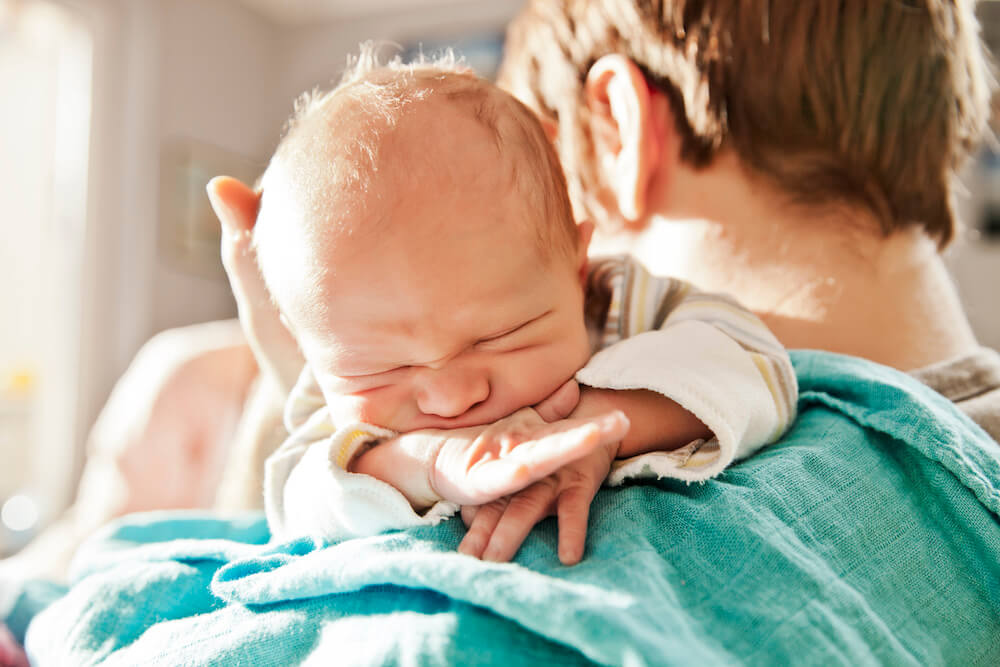Becoming a parent is a joyous and fulfilling experience, but it also comes with its challenges, especially when it comes to caring for a newborn. One common task that many new parents find themselves grappling with is burping their baby. While burping may seem like a simple and insignificant task, it plays a crucial role in helping babies release gas and prevent discomfort caused by trapped air in their tiny tummy.
In this comprehensive guide, we will delve into the importance of burping, the causes of gassiness in babies, the best methods to burp a newborn, what to do if your baby doesn’t burp and when to stop burping your baby.
Why Should I Burp My Baby?
Burping is an essential process that helps newborns release gas from their stomach, which can build up during feedings. Babies tend to swallow air while breastfeeding or bottle-feeding, and this air can get trapped in their stomach, leading to discomfort and fussiness.
Burping allows babies to expel this excessive air and prevents it from causing discomfort or pain. It also helps prevent spit-up, as it releases air pressure in the stomach and reduces the likelihood of stomach contents being pushed back up the esophagus.
Causes of Gassiness in Babies
Gassiness in babies can be caused by various factors, including their immature digestive system, swallowing air during feedings, and certain foods consumed by breastfeeding mothers.
Additionally, babies who are bottle-fed may be more prone to gas if they drink too quickly or if the bottle nipple has a fast flow, causing them to swallow more air. Gassiness can lead to discomfort, fussiness, and even colic in some cases, making burping an essential practice for parents to relieve their baby’s discomfort.
When to Burp a Baby
It’s generally recommended to burp a baby during and after each feeding to help prevent gas buildup. However, every baby is different, and some may not need to burp as frequently as others. As a general guideline:
- If you are bottle-feeding, burp your baby every 2-3 ounces of milk or formula.
- If you are breastfeeding, burp your baby when switching breasts or after each breast, if your baby feeds from both.
Additionally, if your baby seems fussy, gassy, or uncomfortable during a feeding, it’s a good idea to pause and burp them to release any trapped air and provide relief.
How Long to Burp a Baby
The duration of burping can vary from baby to baby. Some babies may burp quickly, while others may take longer to release gas. On average, burping can take anywhere from a few seconds to a few minutes.
It’s important to be patient and continue burping your baby until they release gas, even if it takes some time. Remember to use gentle but firm pressure while patting or rubbing your baby’s back to avoid discomfort or harm.
How to Burp a Newborn
Burping a baby is a simple yet important process that can be done in several different positions. Here are some common methods for burping a newborn:
- Over-the-Shoulder Method: Hold your baby upright with their chin resting on your shoulder. Support their bottom with one hand and gently pat or rub their back with the other hand. Make sure to use gentle but firm pressure and avoid slapping or pounding your baby’s back.
- Sitting on Your Lap Method: Sit your baby on your lap facing away from you, with their back straight and their head supported. Place one hand on their chest and use the other hand to pat or rub their back gently.
- Face-Down on Your Lap Method: Place your baby face-down on your lap, with their head turned to one side. Support their chest and chin with one hand while using the other hand to pat or rub their back gently.
- Face-Up on Your Lap Method: Lay your baby face-up on your lap, with their head slightly elevated. Support their head with one hand and use the other hand to pat or rub their back gently.
Experiment with different positions and techniques to find what works best for you and your baby. It’s important to be patient and gentle while burping your baby to avoid discomfort or injury.
How to Burp a Newborn that Won’t Burp
It’s not uncommon for some babies to not burp, even after multiple attempts. If your baby doesn’t burp, don’t worry. It doesn’t necessarily mean there is an issue. You can try some additional techniques to help release gas and provide relief to your baby:
- Change Positions: Experiment with different burping positions, such as gently bouncing your baby on your knee or laying them on their tummy across your lap. Sometimes, a change in position can help release trapped gas.
- Gentle Tummy Massage: Gently massaging your baby’s tummy in a clockwise motion can help stimulate digestion and encourage the release of gas. Use your fingertips and apply light pressure, being careful not to press too hard. This is OK to do by the time your baby is 3 weeks old. If they’re younger, consult your doctor first before rubbing their belly.
- Bicycle Legs: Lay your baby on their back and gently move their legs in a bicycling motion. This can help move gas through their digestive system and relieve discomfort.
- Warm Compress: Place a warm compress, such as a warm towel or a warm water bottle wrapped in a towel, on your baby’s tummy. The warmth can help relax the muscles and promote gas release.
- Pacifier: If your baby uses a pacifier, offering it to them after a feeding can help stimulate swallowing and release gas.
- Take a Break: If your baby seems content and not showing signs of discomfort, you can take a break from burping and try again after a few minutes.
- Talk to Your Pediatrician: If your baby’s gas or discomfort persists despite your efforts, it’s important to talk to your pediatrician for further evaluation and guidance. Your pediatrician can rule out any underlying medical issues and provide appropriate recommendations.
Remember, every baby is different, and what works for one may not work for another. It’s important to be patient, observe your baby’s cues, and try different techniques until you find what works best for your little one.
When to Stop Burping Your Baby
As your baby grows and develops, their digestive system becomes more mature, and they may need less frequent burping. Typically, most babies can stop being burped between 4-6 months of age. However, every baby is different, and it’s important to observe your baby’s cues and consult with your pediatrician for guidance.
Some signs that your baby may be ready to stop burping include:
- Less Fussiness: If your baby is less fussy during and after feedings and shows no signs of discomfort, it may indicate that their digestive system is mature enough to handle gas on its own.
- Self-Burping: Some babies learn to burp on their own by swallowing air less frequently or by bringing up gas through their mouth without needing to be burped.
- Independence in Feeding: If your baby is showing more independence in feeding, such as holding their own bottle or latching and unlatching themselves during breastfeeding, it may indicate that they are ready to stop being burped.
It’s important to note that premature babies or babies with certain medical conditions may require burping for a longer duration. Always consult with your pediatrician for individualized guidance.
Other Tips for Preventing and Relieving Gas in Babies
In addition to burping, there are some other general tips that can help relieve gas in babies:
- Feeding in an Upright Position: Keeping your baby in an upright position while feeding can help prevent excess air from being swallowed and reduce the risk of gas.
- Avoid Overfeeding: Overfeeding can cause your baby to swallow more air, leading to gas and discomfort. Follow your baby’s cues and avoid forcing them to finish a bottle or a breastfeeding session if they seem full.
- Slow Feeding Pace: Encourage a slow feeding pace to allow your baby to swallow less air during feedings. Avoid using fast-flowing nipples or bottles that may cause your baby to gulp down milk too quickly.
- Burp Mid-Feeding: If your baby seems to be gulping down milk too quickly, you can try burping them mid-feeding to release trapped air.
- Keep Baby Upright After Feedings: Keeping your baby in an upright position for at least 15-20 minutes after feedings can help prevent excess air from being trapped in their tummy.
To summarize…
Burping a newborn is an important aspect of baby care to help release trapped gas and prevent discomfort. It is recommended to burp a baby during and after feedings, paying attention to their cues and comfort level.
There are various methods to burp a baby, including over the shoulder, chest rub, tummy time, and rocking motion. It’s also important to be aware of when to stop burping your baby, as their digestive system matures.
If you’ve followed our recommendations on how to burp a newborn that won’t burp, but none of these have worked for your baby, try our tips for preventing and relieving gas. By following these tips, you can effectively promote your newborn’s comfort and well-being.
Remember to always consult with your pediatrician for individualized guidance and to rule out any underlying medical issues.
For more guidance on your little one’s health and development, make sure you download the Kinedu app and join our expert-led classes on important topics for parents!








